Allocating Education
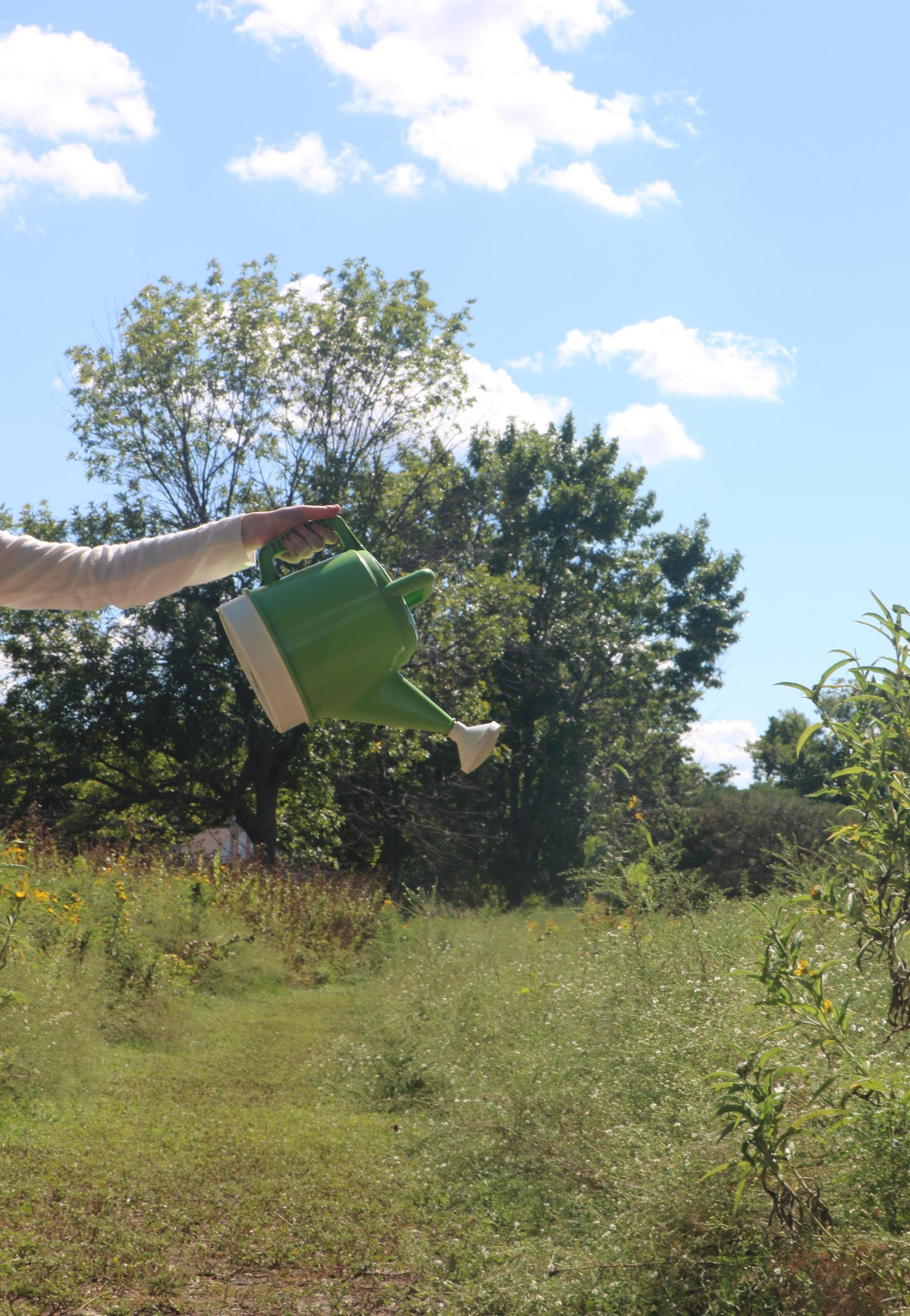








LEARN MORE ABOUT THE DEFUNDING OF THE EDUCATIONN DEPARTMENT ON PAGES 14-17..
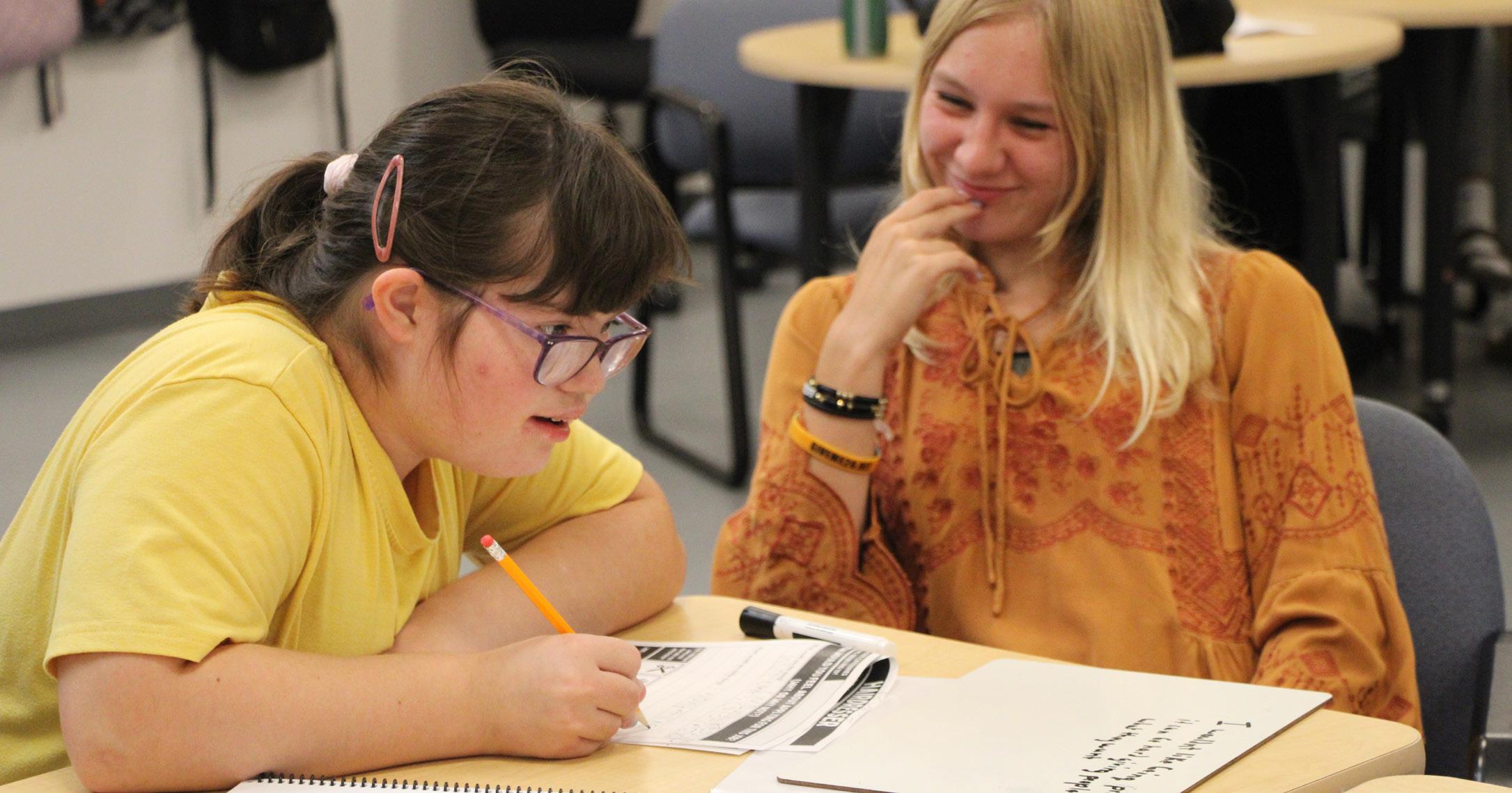
6,7
Aahil
Hannah
Likhitha


Dear Readers,
Hearing the news of President Donald Trump’s plans to abolish the Department of Education has been impactful for many students. Since it was formed in 1980, the Department of Education has provided equal access to education for students and administered federal funding to public schools. However, President Trump has set out to redirect education to the control of states and local communities. As a result, hundreds of millions of dollars of funding have been cut or withheld from public schools around the country, resulting in a sense of uncertainty among students, teachers and parents. The purpose of the Department of Education in the past had been to protect students’ civil rights and provide funding for schools that serve a large number of low-income students. For this reason, the cuts to the Department of Education will primarily affect low-income students, students of color and LGBTQIA students. Many of the protections that the Department has put into place to preserve student equity were among the first $1.6 billion to be cut. As the Department continues
to be dismantled, guidelines surrounding these protections become less clear.
In August, news broke that the Education’s Office for Civil Rights (OCR) and Student Privacy Policy Office (SPPO) would be initiating probes into the conduct of the Topeka, Olathe and Shawnee Mission school districts, specifically for continuing to provide gender-affirming services for students. This drew criticism from several figures within the school district and hit close to home for us in the Blue Valley district due to the proximity of the investigations. Despite the difficulties that the dismantling of the Department of Education could bring to public schools across the nation, local and state governments have the ability to fund public schools for teacher salaries, school maintenance, classroom supplies and school lunches. With more of the pressure being placed on states to ensure the education of their students, it is imperative for citizens to support their local schools and stand up for equal educational opportunities for all students in their state. Many questions remain to be answered, but in the centerfold of this issue, we attempt to provide some clarity
as to what the intention is with these cuts and how they might affect you and other students around the country.
-The North Star Editors
EDITORS-IN-CHIEF
Paul Struby
Olivia Moore
STAFF WRITERS
Grace Kwak
Lauren Chonko
Aahil Hassan
Ami Aguilera
Ayla Agayeva
George Hiestand
Likhitha Vunnama
Rameen Asif
Tae Tran
Vivian Abar
SOCIAL MEDIA EDITORS
Hannah Markiewicz
Van Freeman
DESIGN EDITOR
Safa Al Ameer
WEB EDITOR
Safa Al Ameer
COPY EDITORS
Van Freeman
Anthony Sutcliffe
By Grace Kwak
AFood is fuel, but is BVN lunch giving us enough?

t Blue Valley North, students have the opportunity to bring their own lunch from home or to buy their meals from the school cafeteria. However, I believe that several aspects of our menu could be improved. I’m aware that not everyone eats school lunch—that includes me—but even as a student who has seen the meals, tried them seldomly and heard from peers, it’s worth talking about how our menu could be revamped.
First of all, our lunch periods are quite short. Compared to the past schools I have attended, which all had 35 to 50-minute lunch breaks, each lunch wave at BVN lasts only 25 minutes. Since our eating periods are limited, waiting in lunch lines will take up most of the students’ time. That not only means that there’s less time to eat, but also less time for our bodies to digest the food. When you finally get to your food, you’ve spent more time in line than actually eating it. Nobody wants to head to their next class feeling like they sprinted through lunch and only half-ate their meal. So with that little time to eat and digest, school meals should be nutritious and filling enough for students’ appetites, right?
But, our food doesn’t always meet those needs, especially because of how the quality drops by third lunch. With our schedule having a total of three lunch waves, I have often heard from students that the cafeteria runs out of
food items, leaving third lunch with fewer options. A significant portion of students have third lunch, which isn’t necessarily good, as it doesn’t feel fair when their options are worse simply because of timing. In a way, it feels less like a meal and more like leftovers on repeat when you get third lunch.
It’s not just about temperature, either. I’ve also heard complaints from my classmates about how some of the main meals taste. Sometimes, the bread in burgers can be too oily or the pasta tastes rubbery, then oftentimes, the food that is good runs out fast. Though I don’t eat school lunch often, on the occasions I have, I’ve noticed and gone through the same issues. Sure, pizza can be the fallback plan, but students deserve more than one reliable option to help them go through the rest of their days, well-fed.
That being said, BVN’s cafeteria isn’t awful. The lunch ladies are hardworking and very sweet people, so by any means, I am not looking down on their efforts. In fact, I really like how they provided many small snack options in the cafeteria, ranging from desserts to fruits and packaged goodies. Still, I believe improvements should be made for the betterment of our student body. It could make a big difference for our health and happiness; after all, food is fuel. And if our lunch trays are rethought with better quality and consistency in mind, it could make school lunches just a little better for everyone.





By Tae Tran
News today is absolutely filled with information that is impossible to decipher at times. People aren’t able to understand the topic at hand, or they are easily influenced by outside opinions. There are so many different biases that lie within the news, but I think that we should be trying to fish out the truth.
According to Stanford Medicine, our brains start being able to understand information around middle school, while being able to make our own informed opinions really starts when we’re about to enter high school. I see around me that some students are not able to form their own opinion because of how jumbled the news on TV can be, such as heavy biases influencing the content that is shared with the public.
People are easily swayed by the heavy opinions hidden within the news, but the news should be unbiased; that just isn’t the case most of the time. Whenever I watch the news, there is misinformation and information left out to skew our opinions. I believe the ability to be able to weed out the bad information helps teens form their own opinion on true, unbiased facts.
Age and brain development do help with the ability to weed out bad information. As someone gets older, the more life experiences they have, which leads to how they can understand information in the news. This gives teens a base understanding




of what could be the standard of what they think is right.
When we watch the news as early as first grade, we are not capable of understanding what is being talked about. The child’s mind, especially today with screens, will take in any information it hears and immediately think it’s the right option just because an adult says something on the news. I honestly see that children are able to see what is right and wrong, but they do not know all of the context of what is shown on the news. Children should be able to understand what else is out there in our world, but that comes with age. There is not just information on the news, but also information in other experiences that come with life. These experiences can include jobs, hard school work and even when they have worked hard for a goal that they finally achieved.
Therefore, we should understand the information presented when we watch the news. Even though some watch the news, especially young people before middle school, do they truly understand the news, or are they just watching and repeating what they hear?
We form opinions based on what we have seen, especially since it’s middle school, and that is when the human brain starts developing the ability to think about our information, and onwards, we think about how the news affects us and what we should think about it.








Of 164 people polled on @bvnnews on Instagram.
By Tae Tran




North students share work experiences.
By Rameen Asif
Whether they work in a fast-food restaurant or a retail store, North students benefit from having professional jobs by learning to persevere through challenges within the workplace and by gaining skills necessary for their success in the future.
Sophomore Charlotte Schaeffer works at Culver’s as a Front of House crew member. Her position involves guest attendant tasks, such as wiping down tables, taking customer requests and running the drive through orders. Schaeffer applied for her position this past summer and was hired to begin working in August.
“I love my job because I get to dip

my feet into what a more professional job is like, because I’ve worked lots of odd jobs, but I’ve never had a professional job before,” Schaeffer said. “I really love feeling like I know where I’m supposed to be and having a sense of stability.”
Working at Culver’s has also allowed Schaeffer to develop an understanding of the skills and mindset necessary for a job.
“If you can’t focus or do well under pressure, you won’t do well,” Schaeffer said. “Go with the flow. If you think you’re supposed to be doing one thing, and your manager tells you to do something else, do the thing your manager tells you to do.”
Like Schaeffer, junior Evan Nugent believes that his job duties as a barista at 7 Brew, which include taking orders from customers and preparing and handing out drinks, require communication skills.
“ I think it’s a good idea to work, but you have to know why you want to work. You have to have some sort of goal in mind, even if it’s just to make money. If you don’t, it’s just
kind of going to suck all the time.
-EvanNugent
“You’re trying to make a connection, while also making the drinks and stuff, so it definitely takes communication skills, and you have to be a friendly person. Even if you’re having a bad day, you still show up,” Nugent said. Nugent, who has worked at 7 Brew since February of his sophomore year, also faces challenges in the working environment, especially in regards to customer service.
In addition to working well under pressure, Schaeffer believes that it is imperative to cultivate communication and social skills within the workplace.
“I feel like social skills kind of apply to any job you’re going to have in life. My personal dream is to be a meteorologist, so I don’t think Culver’s really has anything else to do with that besides working well under pressure, working quickly and having good people skills,” Schaeffer said.
“You’re going to have the people who maybe aren’t friendly, or maybe they’re having a bad day or something, so that is always a struggle,” Nugent said. “But it’s important to just move on. Try to keep the same kind attitude because you don’t really know how their day is going.”
Other than situations within the workplace, having a job also poses a challenge to Nugent’s academic life. He explains that sometimes he must work to balance assignments and projects with his work schedule.
“It depends on my week, because I don’t really know what sort of homework or projects my teachers might assign during the week,” Nugent said. “The more homework I have, and depending on my work schedule, it can be pretty difficult.”
Despite the challenges, Nugent believes that working in high school can be rewarding, so long as students are motivated to work.
“I think it’s a good idea to work, but you have to know why you want to work. You have to have some sort of goal in mind, even if it’s just to make money. If you don’t, it’s just kind of going to suck all the time,” Nugent said.
Like Nugent, junior Rowan Walter believes earning income is a significant part of his job. He believes it is fundamental in learning financial skills.
“You have money that you make yourself, and you’re able to budget with that money yourself, you’re able to learn financial skills,” Walter said. “You also don’t have to rely on your parents for cash.”
Walter works as a donations attendant within the Donations Department at City Thrift. His job involves receiving and handling
donations from customers, which can include items such as clothes, furniture, toys and cooking appliances.
“I’d say the most valuable skill I’ve learned is spatial management. The thing is, you have to learn how to work with a lot of material in a little amount of space. People donate dozens of boxes and dozens of bags of clothing and material, and you have to be able to organize it and pack it efficiently, because if you don’t, it quickly spirals out of control,” Walter said.
Previously, Walter worked at Panera and disliked the experience due to his relationship with his co-workers.
“Believe it or not, my co-workers actually [make it worth going to work]. At my last job at Panera, the coworkers weren’t the best, I didn’t really talk to them,” Walter said. “It was more so just a working relationship. At City Thrift, the co-workers are much more than that. Eventually, they become your friends.”
Walter expressed that his positive experiences with his co-workers in addition to the work hours make his current job “better” than Panera. He also believes that working can be beneficial for high schoolers, and advises students to persevere through
challenges when searching for a job.
“ Just keep trying. I applied to 15 other places before I got this job. There is a good job waiting out there for you, you just have to apply yourself,” Walter said. “A lot of people don’t want to hire Gen Z because they think we’re lazy or we’re not willing to tolerate it, but a lot of the time, they mistake that for general self respect.”
Can Blue Valley North truly feel “at home” while playing at the District Activity Complex?
By Lauren Chonko
The District Activity Complex, or DAC, was established in August 1997 and has served as the official home field of Blue Valley North and Blue Valley Northwest. Currently, North and Northwest share the complex for home football and soccer games, but the proximity of Northwest to the DAC raises questions regarding whether North can truly feel “at home” while competing.
Both athletes and coaches have been affected by the facilities at North, especially in the fall season, where football and boys soccer are competing for space on one of the two turf fields. This season, soccer alone has four teams: varsity, JV, C team and D team— all of which require separate practice times. Additionally, C and D teams need space for games at North.
Skyler Roush, the head varsity boys and girls soccer coach, voiced concerns about the changing seasons and how a lack of lights on the east field could affect practice conditions.
“There are no lights on the east field,” Roush said. “So, as the fall gets later, we’re really limited on when
Design By Lauren Chonko
games can start. When a [C/D team] game has to start at five, the varsity team has to be done practicing by 4:30, which doesn’t give us a lot of time after school to practice.”
Juan Ocon, head JV and assistant varsity boys soccer coach, echoed these concerns and voiced one of his own: visualization.
“
“The challenge is trying to implement tactical changes to our team, where we need to see it in a full field, or just a larger field setting, but only have half the field to work with,” Ocon said.
the size of the one that you play on, getting prepared for a game can be a mentally challenging task.
“We get to a game, and we say, ‘Okay, well, we did it in practice, but we only did it in 50 yards, now we’re stretched out over two times that,’” Ocon said.
District wide, you always want, I guess, equity would be the right word, to have all the kids have equal facilities, class offerings and opportunities.”
–MichaelDudley
“
Translating any drill from a practice setting to a game comes with its own set of challenges; when the size of the field that you practice on is half
Another set of sports impacted by limited practice spaces are softball and baseball. Both teams recently received a new turf field and updated training facilities, which coaches and players agree have boosted morale, their fanbase and overall practice efficiency.
Hannah Krueger, a senior varsity softball player, talked about
the increases in both safety and performance that occurred after the field renovations.
“Being on turf, that was something new,” Krueger said. “With dirt, there were definitely a lot more injuries, bad hops, so I think our performance level definitely went up.”
Despite all of the positives of the new facility, both teams are limited to a single field and a small, dirt practice field, which causes issues in scheduling and practice times.
Varsity softball coach Stevie Gibson and varsity baseball coach Michael Dudley both mentioned the challenges of hosting games and productive practices for different teams with varying needs.
“We try to keep them productive, we try to stretch and play a little catch, and then go down to the cages and hit, but the focus level is just very different,” Dudley said. “There’s some stuff that we just can’t do on that little half-infield; the surface on that practice field isn’t great. So, you know, it’s not like we’re going to go up there and take ground balls for 20-25 minutes.”
Gibson also brought up safety as a concern during these shared practices.
“In the past, we’ve had situations where our JV and varsity had a pretty significant talent difference,” Gibson said. “We had some girls who would play D1 softball, and then we had some girls who had never played before. So having them all in the same field can be (1) a safety concern and (2) an intimidation factor.”
Practice times are not the only problem. When it comes to games,
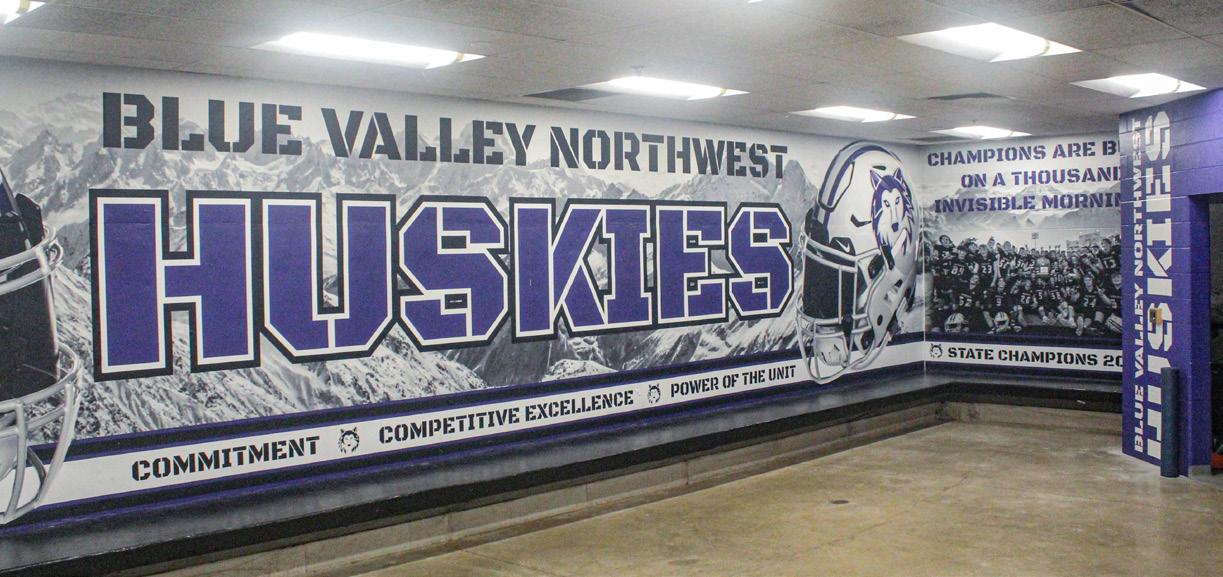
having to share a facility is not an ideal situation and it affects North’s feeling of being the home team. Factors like Northwest’s proximity to the DAC, painted locker rooms and travel time from BVN to the DAC only seem to amplify this feeling.
Assistant Principal and Athletic Director Kelli Kurle agreed that “home” games at the DAC don’t quite feel like home.
“It is hard to see it as a home game,” Kurle said. “Typically, the advantage of a home game is that you can be at home longer, dinner is a little bit later, you don’t have to shove food in your mouth at 4:30. It’s our home game, but we end up taking seven buses to get there; it’s a lot of moving pieces, whereas, if it’s a Northwest home game, they just walk outside.”
The Northwest rivalry is another factor that has only seemed to heighten over the years of sharing a facility, especially after the locker rooms were repainted. The home locker room
at the DAC was redone shortly after Northwest won its state title in football in 2021. Ever since, North has had to use a locker room decked out in purple for their home games. Ocon spoke about the effect that this has on team morale during games.
“When we’re fighting in an overtime game, or when we’re pushing for postseason and we’re hosting and all these Northwest things are looking at us, it doesn’t feel like we have a proper home there,” Ocon said. “It almost feels like we’re in the away locker room.”
Overall, the updates to the facilities at North are an improvement from before, but are a far cry from what the other Blue Valley Schools have at their disposal.
This imbalance in resources casts doubt on the equity displayed in district facility decisions, and questions remain surrounding the impacts on North athletics today and in the future.
By Ami Aguilera
Freshman Harper Winter received her first D1 offer this summer for basketball from the University of Arkansas.
“It was definitely a surreal feeling getting an offer from Arkansas, like all my hard work has been paying off so far,” Winter said.
Working hard for D1 offers and meeting academic expectations causes some athletes to make sacrifices in other aspects of their lives.
”The downsides are just always having to make so many different sacrifices for family and friends,” Winter said.
Freshman Sia Hali believes that one of the reasons Winter is at the level she is at is because of her ability to handle
pressure as it comes at her. She describes Winter as a calm and humble person. Hali says that when Winter faces adversity, she approaches the situation calmly.
“She does handle it well,” Hali said. “She is a very humble, calm person, so whenever she gets pressured, she’ll calm down and think about the situation [from] a different perspective and handle it from there.”
Winter finds a way to maintain friendships in addition to all her school and athletic responsibilities that come with being a basketball player. Winter says that her friends help her with basketball and balancing a social life by playing basketball with her and helping her stay in touch.

Design by Ami Aguilera
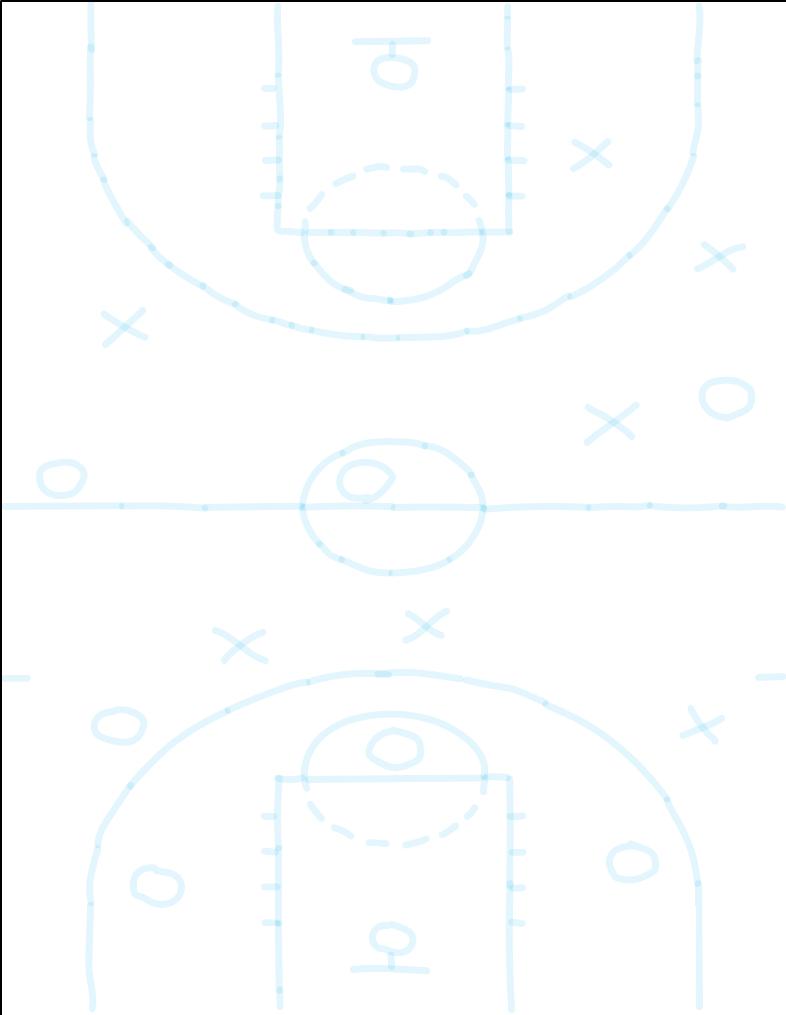
“Most of my friends help me with my social life; they play basketball or other sports too,” Winter said.
Winter is also working with BVN coach Ann Fritz, who is helping Winter pursue the next level of basketball because of her involvement in a network of college coaches.
“I have a network because I’ve been coaching for so long, so there are a lot of coaches I know at the next level, and it’s been fun,” Fritz said.
Winter takes all AP and honors classes for her core classes. AP classes are built to be challenging,

and Winter gets her work done in AST, leaving her with little homework every night. Winter says her nights are mostly made up of working out and basketball.
Winter says the schoolwork is manageable and that she doesn’t really have homework most days.
“She’s hardworking, in the gym 24/7; if she’s not in the gym, she’s studying her homework or doing something she likes,” Hali said.
Winter says she doesn’t really feel like a normal teenager because she is in the gym so much.
“A lot of people my age are very
social, but for me, I’m just in the gym all the time,” Winter said.
Hali believes that Winter’s sportsmanship is what makes her stand out from other athletes around her.
“She has great sportsmanship,” Hali said.
“Whenever she knocks someone down, she’ll always go back and help them up.”
“ I don’t wish I did anything else. I wouldn’t change a thing –Harper Winter“
ter makes her a better basketball player. She has a goal to strive to match Winter in basketball and be the best basketball player she can be, and she believes that Winter helps her acomplish that.
“Playing around her and with her has 100% pushed me as a player to become better,” Hali said.
“It made her more confident; she wasn’t as confident as she is now,” Hali said.
Winter said that if she could go to any college for any cost, she would go to the University of Southern California.
“I would go to USC because I was born in California, and I love their program, Juju [Watkins] and their coach,” Winter said.
Hali believes that being around Win-
Hali believes that before Winter’s D1 offer, Winter wasn’t as confident. She thinks that the offer gave her some more confidence while still being a calm and collected person.

Hali and Fritz both expressed that Winter’s drive to be better than the person who is better than her is what sets her apart from other athletes on the court.
“She’s very respectful and always willing to do anything,” Hali said. “She will push herself to the limit for anything you ask her to do. She’s just a good person overall.”



By Aahil Hassan

Three veteran teachers cover what was slept through.
lue Valley North social studies teachers Jason Smajda, Jason Jones and Jeffery Breedlove have begun a podcast series titled “The History You Forgot.” With a combined 90 years of teaching experience, they cover world history, historical concepts and figures with the goal of reeducating those who have forgotten key concepts. The hosts were interviewed on how this project came to be, the long-term goals and the importance of teaching history.
Smajda credits interactions with parents throughout the years for their interest in history for the idea.
“The impetus really was sitting through 30 years of parent-teacher conferences, and having people say, ‘I would love to take your class now, I hated history when I was a kid’,” Smajda said. “And that always had my wheels turning, I’ve been doing this for so long, I’m thinking about what’s next in my phase of life, like what about helping adults that missed learning?”
With the inspiration to further educate adults over history, the focus then became how to succeed in doing that.



“My daughter had suggested that I do a TikTok thing or an Instagram thing and I mentioned it to Breedlove and Jones,” Smajda said.
The process then began with brainstorming the format, title, how to produce a podcast and the struggles that can come with it.
“Originally we had some titles like ‘Things You Shoulda Paid Attention to’, or ‘You Should Have Paid Attention’ and then it
They shared the differences between teaching a classroom about history and creating a podcast about history.
“One of the things I really had to learn is that I can be performing in front of a class but it’s different than this, it’s a different audience, it isn’t meant for students, it’s kinda meant to hit those adults,” Smajda said. “If I just give an apush lecture, they’re gonna be asleep like they were 20 years ago.”
“ The understanding of how things have gotten to where we are today is valuable.
–Jason Jones
“
Breedlove spoke on how the absence of a physical audience affects the experience for him.
kinda came to, well this is the history you either slept through or you forgot,” Smajda said.
Jones spoke about the struggles of creating a podcast.




“The struggle I think for me has been is that when I’m doing it in class it is also entertainment in a certain way, you have to hook the kids but they’re right in front of me, so I’m looking at you I can see your reaction, but with the podcast format it’s not natural, I don’t look at the camera well,” Breedlove said.
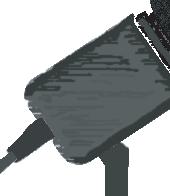
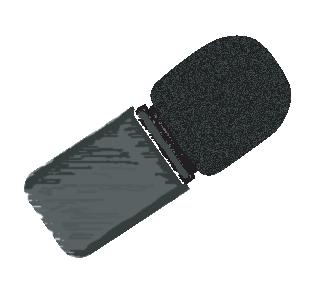


The three were also asked about where their passion for history comes from, Jones cited the desire to understand how the world is where it is today.
“And that shapes things like politics, it shapes policy, it also helps us give empathy, to understand,” Jones said.












Design By Aahil Hassan
“The first episode we practiced it a lot we worked and struggled and we started out as just trying to do this as just audio, then we thought we’d incorporate the video.” Jones said. “One, you’re trying to schedule three people which that can be a problem, two, who answers what, who talks about what when you wanna try to balance it, and just figuring out all the intricacies of how to put it together what software to use how to make sure the sound is good and then once we decided to put video in, how to make sure the video looks good.”
With the development of the project, the three teachers were venturing into a new experience.
For Smajda, it was the desire to understand what came before.
“As a kid going through my parents’ records and going through my parents’ yearbooks, I was always fascinated with what came before me,” Smajda said. “I

was always fascinated by the changes.”
Breedlove credits his love for reading and understanding patterns in history.
“For me when I was a kid I was an avid reader. I just loved to read, so I read biographies all the time. I used to have this thing called World Almanac and it was literally just statistics and stories,” Breedlove said. “I’m also a believer in that history is cyclical, and that human beings live in these cyclical patterns.”
This project has allowed these three teachers to share their passion for history with those who wish to relearn through a new method. Through that, they too get to experience something new.
“In life, you’re always trying to improve, I’ll learn a lot while doing it [the podcast],” Jones said. “That excitement just for learning, if you’re a teacher and you still don’t get excited about learning, it’s hard to have an excited classroom full of learners.”

“The History you Forgot”
“ “ “ ” ”
It’s the things I don’t quite know how to do, I don’t know how to use the software very well, editing, I can’t quite do it, but that’s the exciting part, I’m learning little bits at a time.
- Smajda
I only taught US history once like 28 years ago, so I’ve sort of been rediscovering all this stuff and it’s so much cooler now that I’m revisiting it.
- Breedlove
The trial and error, the process has been the most fun part for me.
- Jones
BVN princpal and teachers discuss their thoughts on the recent Department of Education dismantling.
By Hannah Markiewicz
In February of this year, President Donald Trump issued an executive order to dismantle the Department of Education (DOE), gutting public school funding and access to government subsidized services. This defunding will directly impact BVN, as well as every other public school in the country.
According to Kansas Governor Laura Kelly, in late July there was about $6.8 billion in federal dollars earmarked for public education that the Trump administration was withholding distributing to states, and $43 million of those dollars threatened
Design by Hannah Markiewicz
K-12 education in Kansas.
“The Trump administration’s shocking decision to withhold education funding directly harms students and schools in Kansas and across the country,” Governor Kelly said in a letter written to the Secretary of Education Linda McMahon in July, according to the Kansas Office of the Governor.
According to Associated Press Education Writer, Collin Binkley, the Trump Administration was withholding billions of dollars in an effort to make sure the money was being spent in ways that aligned with the White House’s priorities.
This is not the first time that the DOE has been targeted. According to BBC North America reporter Ana Faguy, former president Reagan also pushed to dismantle it. This is because many Republicans have historically believed that education should be dealt with by state governments and local communities, rather than at a federal level.
While education is technically a state and local responsibility, according to the DOE, the federal government can impose their preferences onto public schools with funding or the lack thereof.
Debate teacher Brian Box shared
his thoughts on the defunding.
As a public school, BVN relies on federal funding for special education, programs for English language learners, academic enrichment and access to technology.
“Without public funding, this school wouldn’t exist,” Box said.
The DOE cuts could personally affect students at BVN as they threaten valuable resources used by them every single day.
Physical necessities are not the only way the DOE defunding threatens public schools. The effects of dismantling it challenges equal education opportunities for all students as well. According to ACLU Communications Strategist Ricardo Mimbela, the DOE played a huge role in protecting students’ civil rights in the past. These civil rights include protecting LGBTQ+ students, students of color and students with disabilities in public schools across the country.
“A lot of the funding that comes from the Department of Education is necessary to maintain the special ed. programs in many schools, so I think it could really be impactful in that sense,” Box said.
While the special education department is vulnerable to cuts, it is currently protected under the Individuals with Disabilities Education Act (IDEA). However, the quality of special education learning could be lowered.
“[The cuts] could mean that our special education students are not served as well as they should be, or it means that we might have to make cuts in other places to reallocate funding
to maintain those essential services,” Box said.
As a special education teacher, Anna Porter sees firsthand how her students and her classes rely on public funding.
“ Most definitely, [my students rely on] the free and reduced lunch,” Porter said.
Free and reduced lunch is a program funded by the United States Department of Agriculture (USDA) and will not be affected by the Department of Education defunding. Additionally, transportation is crucial for students.
“[The cuts] could mean that our special education students are not served as well as they should be, or it means that we might have to make cuts in other places to reallocate funding to maintain those essential services.
–Brian Box
requirements and conditions for eligibility for patients looking to enroll in or maintain Medicaid coverage. Therefore, access to Medicaid, while separate from the DOE, will change for those who rely on it. These resources are put at risk in the defunding, potentially becoming inaccessible in the future. Changes with the DOE stretch beyond physical resources.
““Transportation is probably our biggest use of funds at the moment, because all of my students get school provided transportation,” Porter said.
Transportation that is specialized and medically necessary for students with disabilities, and provides access to medical services, is funded through Medicaid, rather than the Department of Education, and non-specialized transportation costs are primarily covered by individual school districts.
According to the American Medical Association, the One Big Beautiful Bill Act of 2025 creates new administrative

According to Anna Kiminski on KCUR, the DOE launched an investigation into Shawnee Mission, Olathe, Topeka and Kansas City public school districts for allegedly allowing students to participate in sports, use restrooms that align with their gender identity and permitting teachers to maintain confidentiality with transgender students. These could be violations of Title IX and the Family Educational Rights and Privacy Act (FERPA) according to the DOE. The investigation is still ongoing. If educational entities are found in violation of Title IX and/or FERPA, the result can be a termination of their federal funding, according to the DOE. BVN Principal Dr. Tyson Ostroski shared his thoughts on the investigation.
“You know, bottom line… we want to work with our students, and we want them to feel like this is their home, regardless of whoever they are,” Dr. Ostroski said.
BVN tries to uphold a standard of inclusivity within the community, although this could look different with the changes to the DOE.
“[Investigations are] one way that federal education policy can significantly change that would affect local districts, is different administrations have different priorities in what they want our education to look like and tying that to the grants
that they offer is a way of getting those different districts and schools to adhere to those priorities,” Box said.
These cuts will affect public schools entirely, not just students. Teachers will also feel the effects of these changes.
“I think we will continue to see a staffing shortage because of a reduced amount of positions and allotment for those kinds of positions,” Porter said.
Staffing shortages within schools have been an ongoing problem, and a lack of funds could heighten that issue further. Meanwhile, Dr. Ostroski has a different outlook on the effects funding cuts may have on the staffing at BVN.
“There are some cuts to the recruitment of teachers, to the extent of what that is for our district, I don’t know. But for us, we’re pretty lucky in the fact that we’re kind of a destination job for educators, and so we have not felt that yet,” Dr. Ostroski said.
Furthermore, a lack of funding puts further pressure on teachers to find a way to get resources for their classes. According to 2023 Senior Writer and Editor for the National Education Association (NEA) Amanda Litvinov, teachers spend on average $500-$750 of their own money annually on supplies for their students.
“

“We are lucky in the fact that we’re in a community that is really supportive for education, and whether it’s passing the bonds or the support that we have within our own district
You know, bottom line... we want to work with our students and we want them to feel like this is their home, regardless of whoever they are.
“Out of my own pocket, [I spend] probably $500 a year, but this is my ninth year teaching, and I’ve learned over the years that I’m not going to get that money back. So, over the years, I’ve spent less. I started out spending much more,” Porter said.
According to the Institute of Education Sciences, 94% of teachers in the 2014-2015 school year spent their own money on classroom supplies without reimbursement. Meanwhile, there are teachers like Box who choose not to do this.
“I take the very principled stand of spending zero of my own dollars on my class.The school and the government should be paying for those things, not me,” Box said.
While public schools may not know what the future holds regarding the Department of Education, Dr. Ostroski is hopeful for BVN.
–TysonOstroski
“
administration and school board, I feel confident about where we’re headed,” Dr. Ostroski said.
According to the U.S. Department of Education
Race, Color and National
Origin Discrimination +
Race Discrimination in Special Education
Title IX and Sex Discrimination
Disability Discrimination
Boy Scouts of America Equal Access Act
Age Discrimination
Retaliation Discrimination
Nondiscrimination in Employment Practices in Education




By Likhitha Vunnama
With every year that passes by, new teachers and coaches come to work at Blue Valley North. The band and football teams get new staff every year. Connections, relationships and adaptations made over time come to an end as the school year closes off. As leaders change, practices change, and new teaching styles shape the year for each student differently.
Teachers are the fundamental building block for every class, activity and sport. Throughout the year, students begin adapting to the changes, whether big or small, in all their teaching styles. Band students and football players share their opinions about the recent changes to the programs and how they have adapted. Abhi Kambhampati, a senior and a drum major in band, explained how
he interacts with his new assistant and head band directors.
“Meeting these new directors and being able to see their new perspectives, especially as one of the drum majors, I’ve been able to be at the forefront of coordinating stuff between the band directors and the band. So just being that bridge has been interesting to see how that works between different people,” Kambhampati said.
Khambhampati appreciates the different perspectives that he has come across with leadership changes.
Junior Kayden Augustus, who is on the football team, shared his opinion on the new coaching perspective too.
“I’d say there aren’t too many negative things about it other than the fact that it’s a new coach every year and you have to get to know and
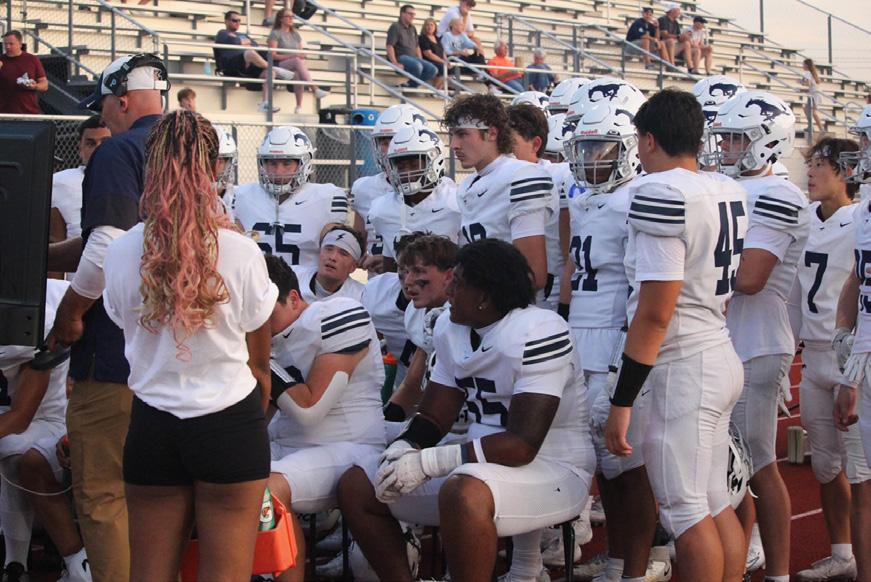
make more connections over and over again,” Augustus said.
These relationships have had to be built from the ground up, but that has not posed a big challenge for either Kambhampati or Augustus. These changes allowed both the band and football team to experience some shifts in what the leaders focus on.
Senior Josie Jones, another drum major, adapted to different warmups and followed different marching preferences as the leadership changed. However, she still believes that their virtues and goals remained the same.
“They’ll come in and change and have us do different ways of different fundamentals or different stretches or different things like that,” Jones said. “But the core of the program and our core values and what we try to do and help with, I believe, have stayed the same through all of our changes, which

Design By Likhitha Vunnama
has been awesome.”
When the year comes to an end, these students experience pain as the staff leaves, they soon come to an understanding of why the shift had to occur.
“Having those switches, it hurt because we miss them, but we ultimately understand that they left for certain reasons and that we hope the best for them. We grow from those experiences,” Kambhampati said.
The band and the football team both learned from the switches they faced in their years at North and have overcome them.
“All the coaches that are brought in are great coaches and great people, so I wouldn’t say it’s too much of a challenge to overcome,” Augustus said.
Different teachers that Jones and Kambhampati have had impact how they interact with their program.
Jones believes that all the teachers want the program to do well, so they give each student an equal amount of support for the benefit of the members.
“I would say that they all do things a certain way, and they all want us to succeed and see us do well,” Jones said.
Kambhampati agreed with Jones, saying that all of his band teachers have made him feel important to the program.
“We’ve really handled the change really well and recovered really well. All of our staff’ at BVN is incredible so there’s not really anything to complain about. - Josie Jones
“The trust the students put into the new staff causes them to accept the shift and overcome the challenge of moving on.
“Every single director that I’ve had at this school, I can’t really complain about in any way, shape or form. They’ve all given it their all,” Jones said. “They’ve all cared about all the students, and they’ve all really wanted the best for the program and every single individual in it.”
The care that the staff has towards every student also makes it harder for them to let go of their previous teacher.
“The teachers that I’ve been able to kind of work with longer, like Mr. McCarty—he’s been my teacher for four years now—they have really impacted how I treat band [and] how I interact with band,” Kambhampati said.

“They’ve been really amazing. I would say that those teachers— not just Mr. McCarty, but all of them combined— made an impact on me, and they all made me feel like I had a place there in band and how I mattered,” Kambhampati said.
Mr. Freeman ’24
Mr. McCarty-Current

Mr. Rezincheck ’25 &

Mr. Weir-Current
Mr. Hudgens ’24
Coach Pummil ’23


How do students and staff view the new campus policy?
By Van Freeman
At the start of the 20252026 school year, BVN changed its policies on leaving campus during the school day. Even though students expressed their negative opinions on the new policy, administration held firm. What are the thoughts of the students displeased with the new policies, and what drove the administration to make these changes in the first place?
BVN Student Support Staff member, Sean Birdsong, discussed the previous issues with students leaving campus during school hours.
“It’s always sort of been closed campus. I guess you could say the problem is when you have parents, or people calling out the kids,” Birdsong said. “It got in bunches, and kids felt that they could leave, but [administration] wouldn’t know why the kids were leaving. It’s been in place
Design by Van Freeman
for a while, I just think this year, and even last year, the past two years, we’ve tried to really keep a handle on that.”
Senior Paz Aguilera also commented on past student behavior relating to leaving campus.
“I feel like a lot of seniors developed habits of leaving campus for advisory, AST and lunch, as well as first and last hours in the past,” Aguilera said. “The new policies have made it harder to be able to do that.”
With the new changes to campus policy this year, staff have noticed positive changes to the attendance of students in their classes.
“I think the staff loves it, especially the teachers, because now you have kids that are on time,” Birdsong said. “We have AST, we have breaks, and you don’t have to worry about kids being gone for an extended period of time. We, the teachers, will know that they’re going to be back on time.
That way, it doesn’t cut into the lesson they’re trying to teach.”
Despite positive staff reactions, students haven’t been as appreciative of the new policy changes.
Junior Finley Wainscott shared his feelings about how the new campus policy affects the students at BVN.
“I feel like it definitely makes it more [important] to be in school because the punishments are harsher, and you’re more likely to get in trouble,” Wainscott said. “But, I also feel at the same time, it makes the school have more of a prison sense because you don’t have the freedom to leave. And I know you’re not supposed to leave, but you don’t have the freedom to leave if you don’t have to be here, and sometimes even if you do have the right to leave, they’ll still question you about it.”
Aguilera also shared her thoughts on the policy and its punishments.
“I think that it’s a little bit excessive. I understand the safety policy here, but the $25 fine to let people in a side door feels maybe a bit too much,” Aguilera said.
Birdsong discussed students’ reactions to the new policy.
“Of course, there’s going to be some pushback from the students when you’re changing things,” Birdsong said.
Aguilera also commented on student feedback toward the policy.
“I think generally, students will be upset by it, but that’s the only negative impact,” Aguilera said. “It’s just like a change of procedures here. Everyone’s kind of frustrated, but there’s no huge negative impact.”Birdsong also talked about the benefits the new policy can provide students.
“It benefits [students] by keeping them safe, making sure they’re on time in their classes, but also in the long term by accountability,” Birdsong said. “[Students] are probably gonna appreciate it when you get older.”
“
“I think it’s very safe for the school because there are no accidents that can occur outside of school that could be pinned on [BVN] and used against them,” Wainscott said.
Aguilera agreed on the safety that the new policy provides.
“Leaving campus allows for possibilities like getting into a car accident,” Aguilera said. “It keeps the school safe because they’re reliable for us and what happens to us during the school hours as long as we’re here, so once the student leaves, anything can happen, and the school is held accountable.”
Birdsong also discussed the staff’s perspective on student safety.
That’s the main thing, keeping kids safe on campus, making sure you guys are not just out and about, because anything can happen, –SeanBirdsong
Some students disagree that the closed campus policies benefit BVN.
“I don’t really think it benefits the students at all, because if the students wanted to stay, they could have stayed before. The reason people are leaving is because they want to leave,” Wainscott said.
Despite the conflicting views of students and staff, they can agree on one important benefit the new policy provides.
“That’s the main thing; keeping kids safe on campus and making sure you guys are not just out and about because anything can happen,” Birdsong said.
Birdsong shared his thoughts on if the policy may change in the coming years.
“Change? No, I think if we stay consistent with it, which I think we will, it’ll stay consistent and everything will be great,” Birdsong said. “Everybody’s on board with the policy, so it’s really up to us to continue to stay on board.”

How do student athletes enrolled in Honors and AP level classes manage their schedules at BVN?

By Anthony Sutcliffe
As the school year ramps back up, students have to find ways to balance their new class schedules and workloads with their extracurricular activities on and off campus. This can be a challenge for any student, but for athletes taking AP or honors classes, schedules can fill up quickly.
For some students such as Jacob Palan, sophomore year is a time to explore the world of AP classes. Palan is enrolled in all honors or AP classes this year, two of which are not typically considered sophomore level courses.
“This semester, I’m taking HAPC BC (Honors Accelerated Pre-calc BC), AP Physics, AP World, Honors Chem, Honors ELA 10, Honors Spanish IV and Advanced Debate,” Palan said.
Design By Anthony Sutcliffe
Besides homework, Palan’s schedule is also filled with sports. More specifically, cross country, tennis and weight lifting.
“Right now, it’s cross country season, so I’ll be running anywhere from three to five or six days a week if there’s meets,” Palan said. “I’ll be playing tennis two to three days and lifting three days a week.”
For Palan, it is important to stay focused and disciplined — not only in the classroom but also in his sports. cross country meets are held early on Saturday mornings, and typically, Palan has to arrive at his meets anywhere between 7:00 a.m. and 10:00 a.m. This means that preparation starts the night before.
“Cross country meets are starting up pretty much every Saturday, which
is pretty tough because it means no fun Friday nights. You have to sleep in to prep on Friday,” Palan said.
Another student athlete with an advanced academic schedule is sophomore Will Petersen.
“I’m taking Honors ELA, Honors Spanish 4, AP World History, Honors
Algebra and Honors Accounting,” Petersen said.
Petersen is currently playing soccer for BVN and will play baseball in the spring as well.
“For soccer, we have practices MondayFriday besides game days, and they’re usually from 3:00 p.m.-5:00 p.m. or 3:15 p.m.-5:00 p.m.,” Petersen said.
also plan which assignments I’m going to do, what things I’m going to prep.”
Chonko also talked about the importance of time management.
“ I want them to understand that they are student-athletes, and that the student part does come first.
–Mark Chonko“
Petersen plays for both the JV and varsity teams at North. This means that some weeks he has multiple games, leaving him with even more that he has to plan his already busy schedule around. Varsity and JV games also have different start times on their respective game days.
“I’m on varsity and JV, but JV games are from 5:00-6:30 p.m. and varsity games are from 7:00-8:30 p.m.,” Petersen said.
Between academics and sports, it can be important for students to find a balance in their schedule. Currently, Mark Chonko is a math teacher at BVN, teaching Honors Algebra II, AP Calculus AB and AP Statistics. However, Chonko is a former studentathlete and coach himself. He played baseball at The Ohio State University when he was in college, and he used to coach the baseball team at BVN.
“I want them to understand that they are student-athletes, and that the student part does come first,” Chonko said.
Chonko says that there are certain things that students do at times that rub teachers the wrong way.
“I think the biggest thing is making excuses, and it’s the people who are willing to put in the extra time, effort and energy, they’re the ones who are ultimately going to be successful,” Chonko said.
For students like Palan, it helps to have a plan for each day.
“I try to only bite as much as I can chew, [and] not take too much at once everyday. I’ll try to plan out what I’m going to do, whether that’s a lift, or run, or tennis or a mix,” Palan said. “I
“I think it’s just important that you’re aware of the hours that you have available to you, and it varies. It depends on being in season or out of season. I think the biggest thing is knowing what you have to do and knowing the time you have to do it in, and being realistic,” Chonko said.
It can also be equally important to have a good mindset and work ethic about the things you do as a student athlete. Petersen shared how this work ethic can help.
“I try to be hardworking in both school and sports and manage my time wisely,” Petersen said. “I try to not spend time sidetracking on my phone. I try to be very dedicated.”
At the end of the day, it takes a certain mindset to be a successful student-athlete.
“One of the things I loved when I was coaching here was when I was able to teach some of the guys that I was coaching because I got to see them and how they were in the
classroom and how they were on the athletic field,” Chonko said. “The ones who were the most successful had the exact same mentality in both. Those who were diligent and put the work, time and energy in the classroom, I saw those same work habits out on the field.”
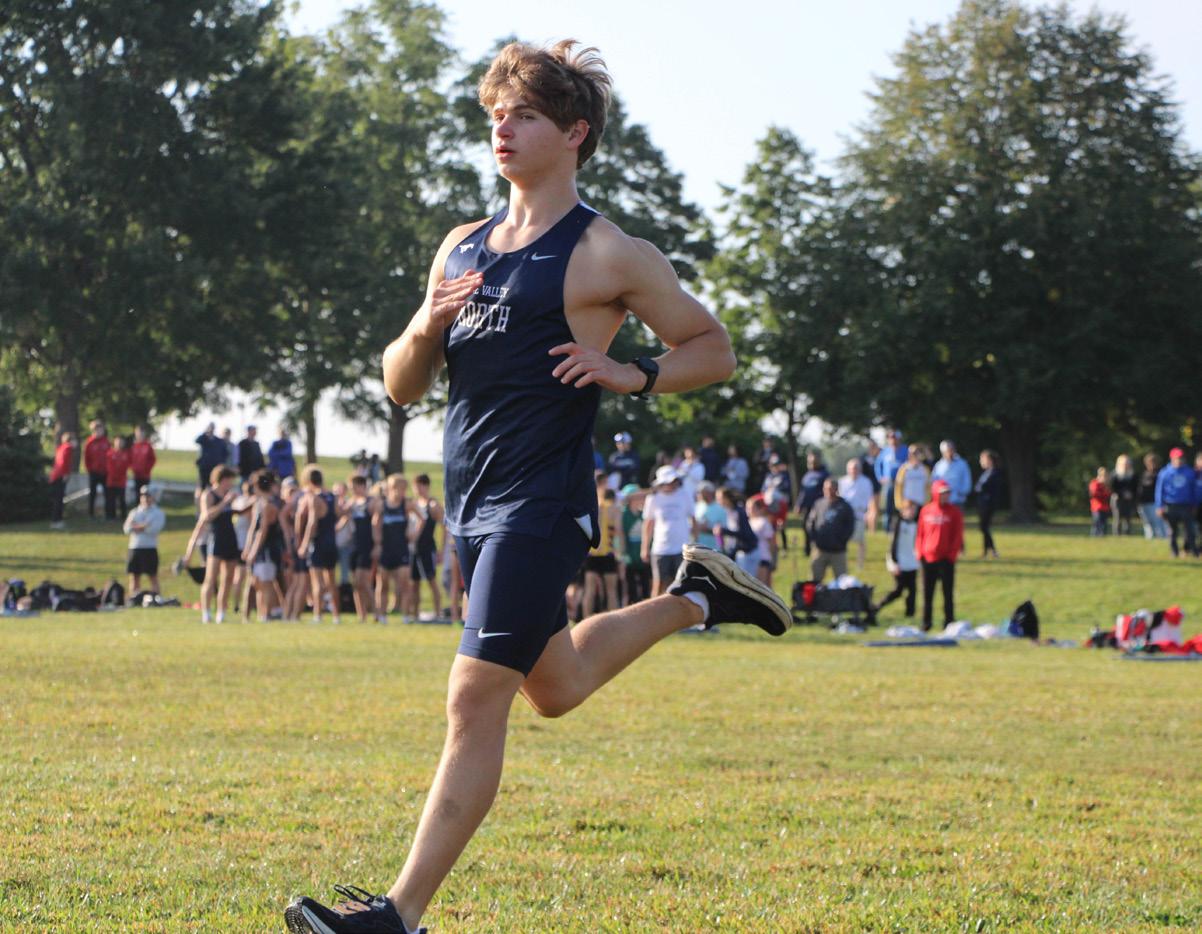

By Safa Al Ameer
than that at football. It brings up the question, what do football games have that other sports don’t?
Senior Benjamin Stutz believes that winning or losing doesn’t play a role in why someone shows up to the football games.
become BVN tradition to show up to the games, dressed up in theme and hang out.
“The sport is obviously its own thing, but the tradition has more emphasis than the sport itself,” Stutz said.
lue Valley North has a three time state-winning boys swim team, a girls basketball team that has recently won two state championships and a girls softball team who won regionals last year. That being said, these sports have little to no attendance. On the other hand, football games are widely attended.
Last year, the BVN football team became regional champions for Class 5A during the postseason. During the season, the team won once against Shawnee Mission North. This was the first win since 2022.
The girls basketball team, on the other hand, became state champions in Class 6A; however, the student section at these games was significantly smaller
“It’s a fun event, win or lose,” Stutz said. “It’s something to go to. You see your friends, spend time with them, have a good time.”
“
The sport is obviously its own thing, but the tradition has more emphasis than the sport itself.
–BenjaminStutz“
Stutz plays soccer and football for the school, and he’s been on both ends of the spectrum, having many people show up to games and having only a few show up. According to Stutz, most people don’t show up to soccer games because they’re less fun to watch. Soccer games tend to end with low numbers on the scoreboard compared to football. Stutz also thinks football as a tradition is greater than other sports. It has

Design by Safa Al Ameer
Junior Parker Hu believes that factors such as the themes and whether it’s a home or away game play a big part in why people go to the football games. However, Hu suggests people show up to football games rather than other sports due to the location.
“Football, you can get up and walk around, but at basketball, you have to stay in the bleachers,” Hu said. Soccer is also held at the DAC like football, yet people tend to only go to the White Out game for boys soccer and little to no games for the girls soccer team. Hu says timing plays a factor to that, believing having the
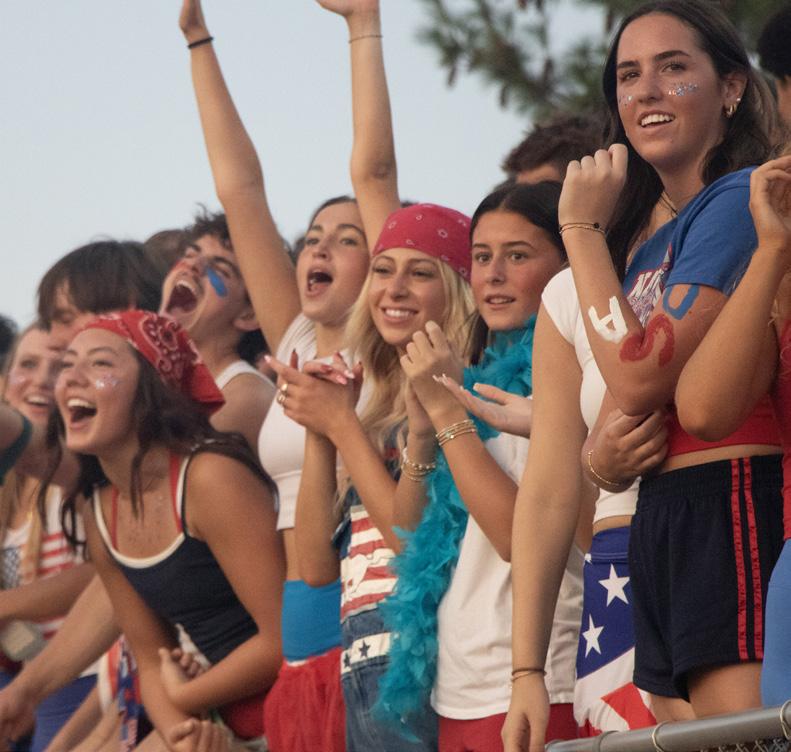
games on Friday is more convenient.
“Fridays are test days because it’s a short class, so [we] usually don’t have a lot of homework,” Hu said.
Senior Lauren Freberg believes the football games tend to be more of a place to hang out.
“For the girls, it’s probably more of a social event, and sometimes even for the guys, just because you’d get to see everybody and cheer even if you don’t know what’s going on,” Freberg said.
As a spirit squad member, Freberg is required to go to the games, but when it comes to football, that’s never a problem for Freberg because she loves the sport. She thinks the band and cheer team are other reasons why people go to the football games.
“The band is part of the reason I go,” Freberg said. “Hearing the band right next to you blaring in your ears is kind of nice. The cheerleaders screaming at you is kind of good too. It makes you want to be loud.”
Although basketball has the band playing and the cheerleaders there as well, Hu says it’s different compared to the football games.
“The band definitely makes it more interesting because they do their performances, and the halftime [show]


makes it more fun to watch,” Hu said. “In basketball, they don’t really play, and it’s half of the cheer team.”
Similar to Hu, Freberg thinks the day of the games plays a big role in whether someone attends or not. She said that last year, the girls soccer team had one Friday game, and that’s where they had their biggest crowd. She assumes if soccer had less games on Thursday, then there would be a bigger turnout. Freberg also believes sports like girls soccer don’t get the appreciation they deserve.
“I feel like soccer is a hard sport,” Freberg said. “It’s contact, it’s running, it’s technical and we were really good last year. It’s frustrating when teams that aren’t very good get more attention than us.”
Freberg says that although having people on the stands while she plays soccer is a “little bit of pressure,” it’s also “nice” to see people you go to school with supporting you. Freberg doesn’t understand why people don’t attend games of teams that are known to win, but she thinks gender might play a role in people’s decision to go to the games.
“Our girls basketball team last year was 10 times better than every
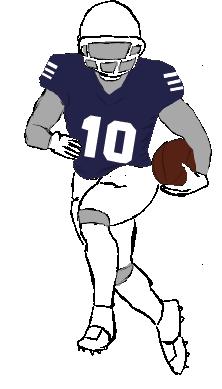
sport, and they still had no crowd, just because they’re girls. Everybody still went to the boys basketball games instead,” Freberg said. “I went to the girls basketball games last year because it was way more interesting to watch us win. I don’t understand why people don’t go to those[games]. If it’s a better game, wouldn’t you rather go to that?”




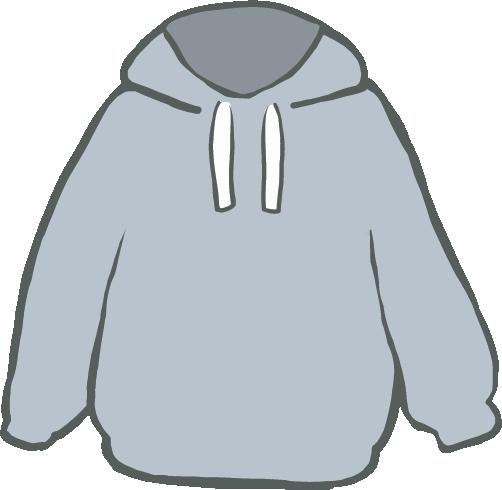
The season isn’t defined online, but in the moments we share.

By Grace Kwak
I’ve been stumbling upon some key autumn trends that I saw on my phone while scrolling recently. With the fall season coming up, a lot of students are starting to romanticize it as a “study season,” rewatching famous TV shows like “Gilmore Girls” and shopping for new clothes. Starbucks advertisements of the Pumpkin Spice Latte are everywhere and in stores like Bath & Body Works, fall collections are on sale!


Seeing all of these things has made me reflect on how I perceive my own autumn and how it feels very different inside the halls of our school. Personally, when it comes to fall-time, things get really cozy for me: zipping up hoodies, seeing frost on car windows and getting warm beverages with friends. Sports games and bundling up in blankets are the quintessential autumn activities that soften the hard shift into colder weather. I’m sure many of us can relate to that sense of comfort.
Part of that comfort shows up in the way we dress, as clothing becomes a big deal during this season. Since school starts in the fall, a lot of us buy new clothes for the new year. The clothes we pick often tie into internet aesthetics. Baggy jeans, leather jackets, cable-knit sweaters, Uggs and Converse shoes dominate the hallways. While this isn’t bad in any way, it shows how much of our style is shaped by what’s trending online.
Design by Grace Kwak
But autumn isn’t just about what we wear; it also reshapes how we learn. Academics become another defining part of the autumn season. With classes ramping up, I often find myself studying late into the night, to the point where I’m getting used to it. My friends do the same. Fall feels like the time when our minds reset into learning mode, training us for long hours, assignments and busy schedules.
When I think of autumn, I like how it marks the beginning of so many activities and experiences. This ranges from sports games and classes to coffee dates, time with friends and the changing colors of leaves. All these moments remind me how special it is to share autumn at BVN, with each one weaving into our season in a meaningful way.
At the end of the day, autumn doesn’t belong to Starbucks ads or “study season” hashtags. It belongs to every individual: to the hoodies, late nights, crowded games and quiet moments where we notice the leaves changing. That’s the autumn we live in at BVN, a season that doesn’t need to be filtered or reduced, because its beauty lies in how we live it and notice things differently, not in how the internet tries to define it.





By Ayla Agayeva
The flaws of fashion in schools today.
ime is a gift and something we students do not have enough of.
Having to wake up early every morning is painful enough, but having to take your time to choose a comfortable yet functional outfit simply adds to the pain. The benefit that uniforms could provide to BVN is severely overlooked.
Now, do not get me wrong—I love fashion and wearing clothing that represents me more than anything, but having to pick out an outfit every day while being sleep deprived has slowly been taking the joy out of it for me and many others. Uniforms would not only save time; they would preserve students’ confidence and increase sustainability.
How you choose to determine the course of your school day depends on how confident and comfortable you feel. While some may choose their clothing for the next day in advance, many do not. The need to choose a cohesive outfit is daunting, especially at
trend every month making it impossible to keep up. Time has proven that trends dictate our lives — which explains the collective need for every teenager to switch to low-rise jeans and Adidas Sambas. Personally, I love a good pair of jeans and simple shoes, but not everyone is the same. That is why having to focus on what

Students’ top-rated statements with responses of ‘Agree’ and ‘Strongly Agree’ were: “I still have my identity when I wear a uniform” (54 percent); “My family likes that I wear a uniform to school” (53%); “I think uniforms save money on clothes” (50%); “I worry less about how others look” (42%).

is currently trending when you are rushing in the mornings is one vast
Furthermore, sustainability has been lost in many aspects throughout our school, such as the cafeteria, where plastic utensils and styrofoam plates are used in excessive amounts. Fast fashion only makes this sustainability problem worse. Therefore, there is a huge benefit to uniforms beyond those that impact confidence and time of BVN students.
I understand that it is difficult to implement uniforms right away; that does not mean it can not be done. Little by little we can implement uniforms and we will see their real benefits: efficiency, improved confidence among students, higher academic performance and increased

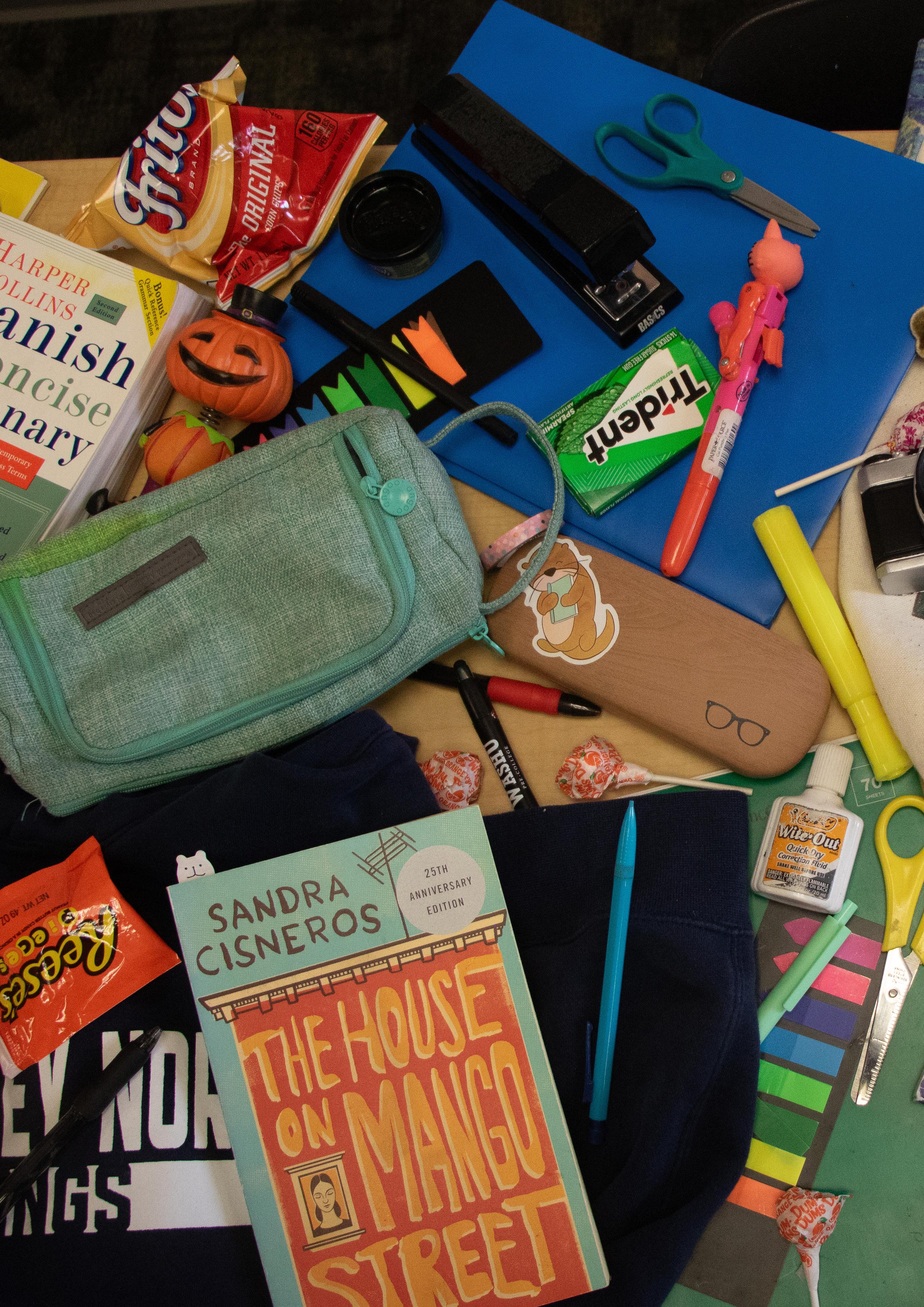
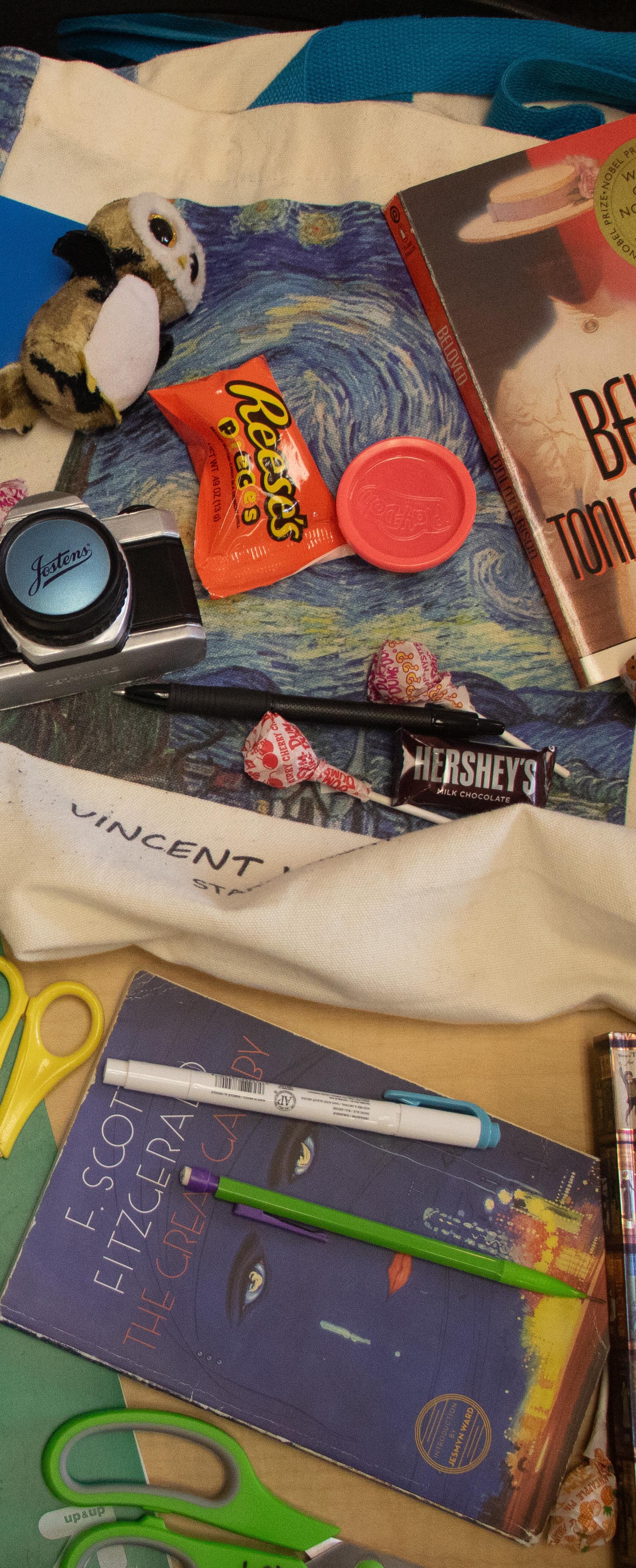
By Olivia Moore and Paul Struby




Photos from the start of the school year at BVN.
By Olivia Moore and Paul Struby
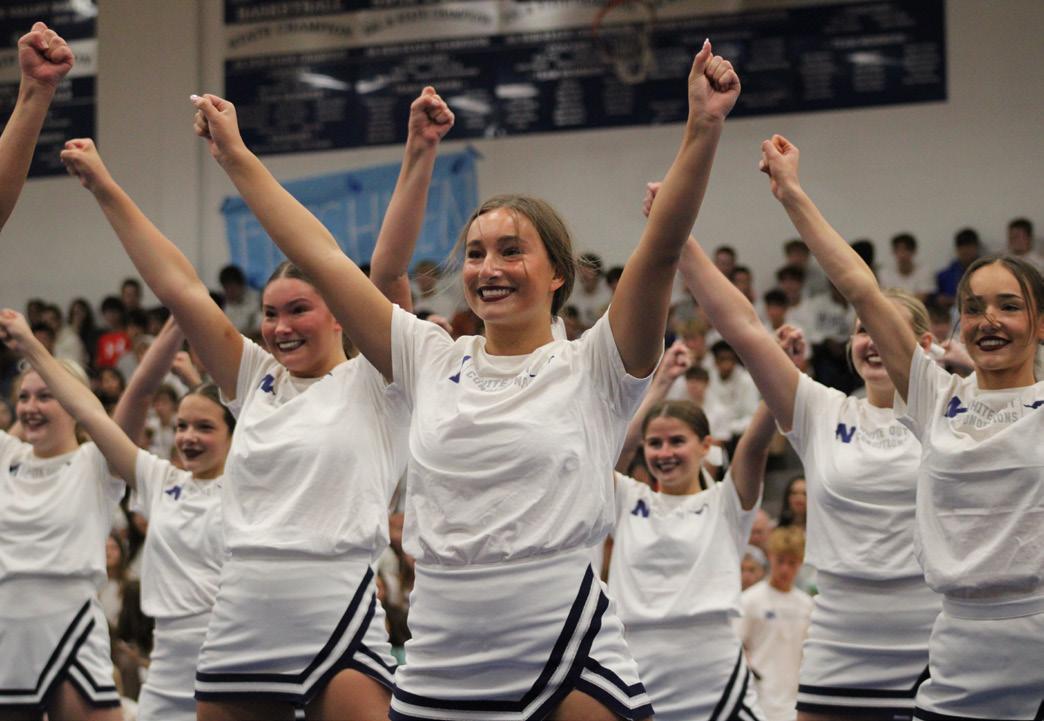




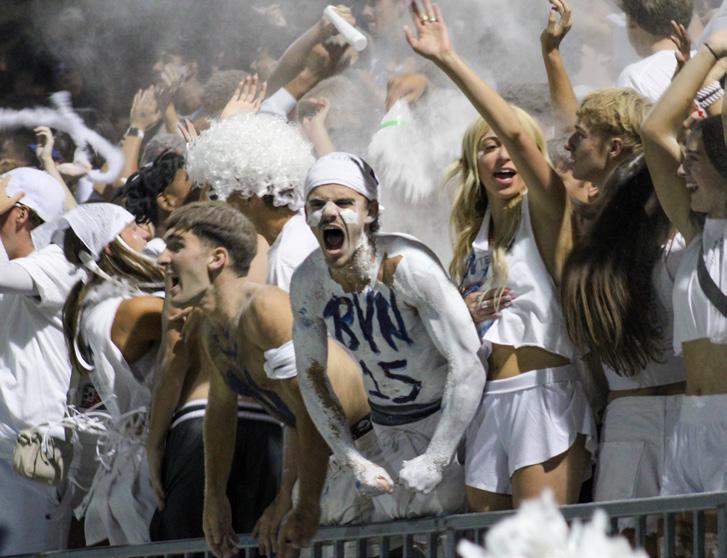

Relax and enjoy the North Star Crossword, with questions taken from our stories.
By Paul Struby and Olivia Moore
ACROSS
3. Harper Winter’s dream school.
5. Mr. Chonko’s alma mater (2).
7. The name of BVN’s band director.
8. The staff reactions to the new closed campus policy, as described by Mr. Birdsong in “Sorry, We’re Closed”.
9. Evan Nugent’s job at 7-Brew.
DOWN
1. The seller of the pumpkin spice latte mentioned in “Autumn in the Halls”.

2. Mr. Ocon’s main concern with playing at the DAC. 4. The Shawnee Mission school defeated by the Mustangs last football season.
6. The type of learning Mr. Smajda thinks would put parents to sleep.
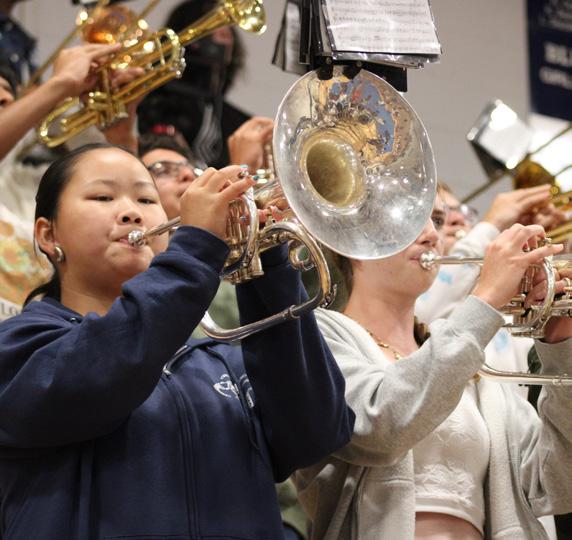
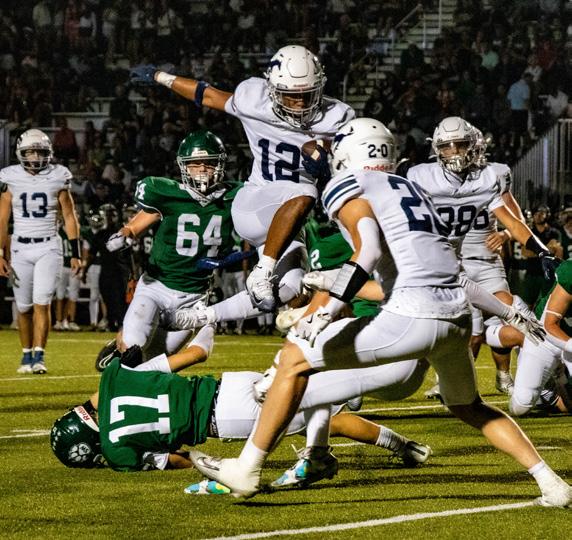
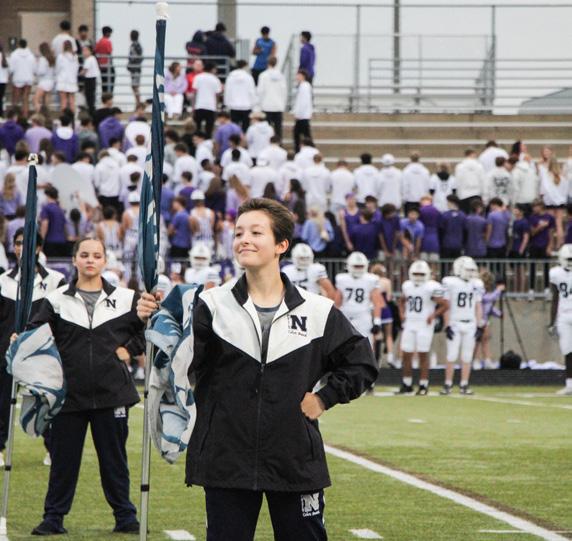
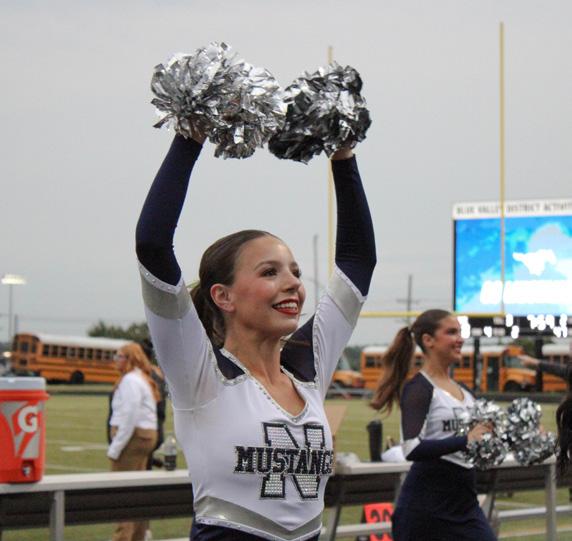


“The North Star” is the official high school news publication of Blue Valley North High School, an open forum distributed to all the students six times a year. This is the May issue of volume 36. This issue of “The North Star” is published digitally through ISSUU and in print by “Record News.” This is a student publication and may contain controversial matter. Blue Valley School District No. 229 and its board members, officers and employees disclaim any responsibility for the content of this student publication; it is not an expression of School District Policy. Students and editors are solely responsible for the content of this student publication.
